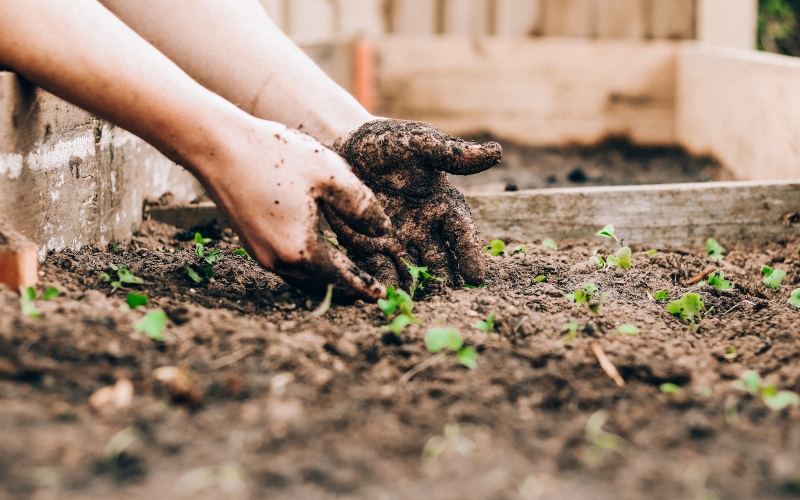Preparing your vegetable garden before transplanting your plants into your garden is essential to grow healthy plants and get the best harvest possible.
Here are some steps you can follow to get your vegetable garden ready:
1. Clear the area
Remove any weeds, rocks, or debris from the area where you plan to start your vegetable garden.
Be sure to mulch the area after clearing it to make sure weeds don’t get a chance to regrow. You can reuse the weeds themselves as mulch after drying them or you can add them to the compost bin. Although using weeds as mulch can make it more likely for the weeds to regrow, as long as you keep adding layers of mulch often enough, the weeds won’t get a chance to grow back fully.
2. Test the soil
Testing your soil can help you determine what amendments, if any, are needed before planting. You can purchase a soil test kit from your local garden center or send a sample of your soil to a soil testing lab for analysis.
If you’re unable to test your soil it’s best to stick to a neutral amendment like compost.
3. Amend the soil
You’ll definitely need to amend the soil if you’ve grown any vegetables in the same area recently. If it’s an area that has not been used for much gardening before, you may be able to get away with only adding the weeds that you’ve removed as mulch so that there’s not much nutrient loss.
Vegetables grow best in soil that’s slightly acidic but close to neutral at about pH 6.0 – 7.0. If your soil is too acidic or basic, you’ll need to add an amendment that will make it more neutral. Amendments like lime, dolomite, and wood ash can be added to neutralize acidic soil, while amendments like sulfates and coffee grounds can be added to neutralize alkaline soil.
Although traditional methods dictate that you work these amendments into the soil, it’s now been found that you can just add them on the top and let them work their way into the soil.
Another good amendment for any vegetable garden is coco peat. Cocopeat doesn’t add any nutrients itself until it decomposes, but it greatly improves the water-holding capacity of the soil. Adding a very thin layer will improve water retention, as most vegetables need constant moisture. More information on how to use cocopeat in your vegetable garden
4. Apply fertilizer
Before planting, apply a balanced fertilizer to provide your plants with the necessary nutrients they need for healthy growth. If you’ve already added compost or other amendments that have nutrients in them, you can skip this step.
5. Mulch the entire area
Once you’ve added soil amendments and fertilizer, mulch the beds with organic materials like straw, dried weeds, or leaves. This will prevent the loss of the newly added fertilizers and amendments. Plant roots hold nutrients in the soil but until your plants have large enough roots, you’ll have to mulch to keep the nutrients in.
The mulch will also help create an environment that promotes the growth of good soil organisms and will keep weed growth suppressed.
6. Water the soil
After you’ve added the amendments, fertilizer, and mulch, you should water the soil thoroughly to distribute the new additions and allow them to get to work.
By following these steps, you can ensure that your vegetable garden is ready for planting and set up for success.


